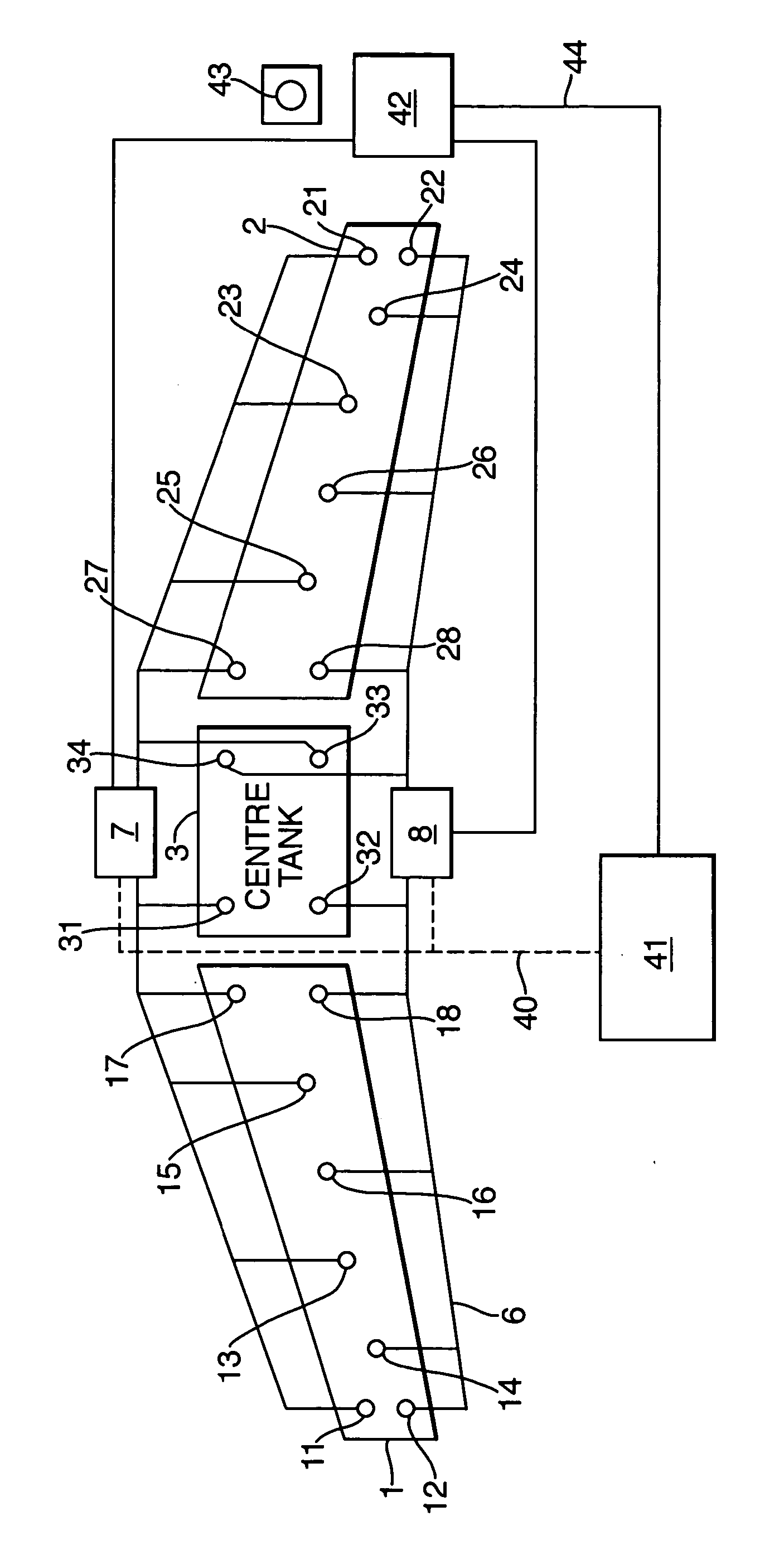Fluid-gauging systems
a technology of fluid gauges and fluid gauges, applied in liquid/fluent solid measurement, instruments, machines/engines, etc., can solve the problems of inability to provide a secondary gauge system, inability to fit such a system to modern composite wings, and inability to provide such a system
- Summary
- Abstract
- Description
- Claims
- Application Information
AI Technical Summary
Problems solved by technology
Method used
Image
Examples
Embodiment Construction
[0013] The system includes two wing tanks 1 and 2 and a centre tank 3. The wing tanks 1 and 2 each include eight fuel height gauging probes or sensors 11 to 18 and 21 to 28 respectively, each of a conventional kind. The centre tank 3 has four sensors 31 to 34. A first group of odd-numbered sensors 11, 13, 15, 17, 21, 23, 25, 27, 31 and 33 are connected by wiring 5 to a first fuel-gauging computer or processor 7. A second group of even-numbered sensors 12, 14, 16, 18, 22, 24, 26, 28, 32 and 34 are connected by wiring 6 to a second fuel-gauging computer or processor 8, independent from the first processor 7. The processors 7 and 8 are each programmed to provide an output indication indicative of fuel quantity from a suitable fuel-gauging algorithm, pre-programmed with information about the shape of the tanks 1, 2 and 3 and from the height information from the sensors 11 to 18, 21 to 28 and 31 to 34 connected with the processors. The quantity information may be in the form of fuel volu...
PUM
 Login to View More
Login to View More Abstract
Description
Claims
Application Information
 Login to View More
Login to View More - R&D
- Intellectual Property
- Life Sciences
- Materials
- Tech Scout
- Unparalleled Data Quality
- Higher Quality Content
- 60% Fewer Hallucinations
Browse by: Latest US Patents, China's latest patents, Technical Efficacy Thesaurus, Application Domain, Technology Topic, Popular Technical Reports.
© 2025 PatSnap. All rights reserved.Legal|Privacy policy|Modern Slavery Act Transparency Statement|Sitemap|About US| Contact US: help@patsnap.com


